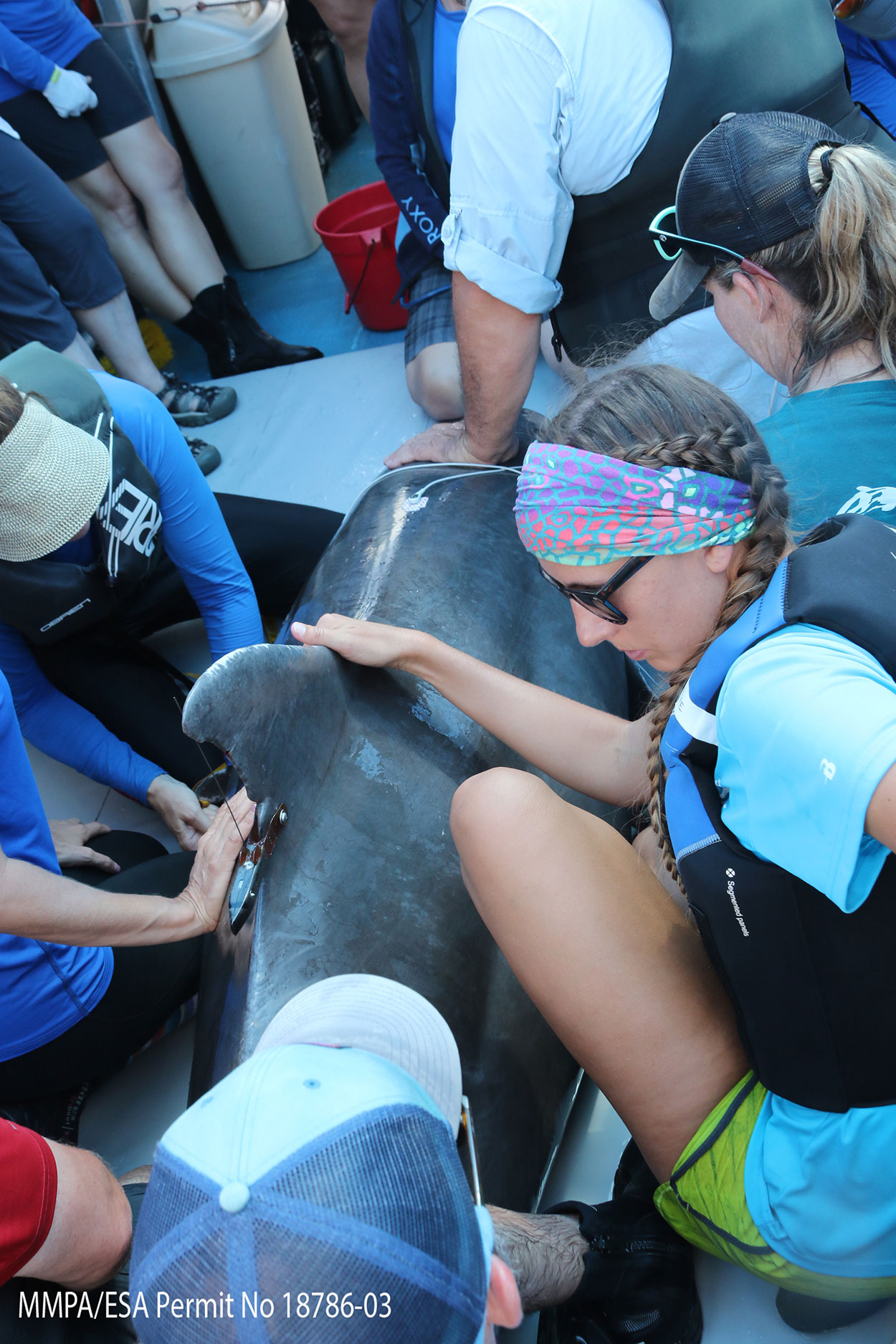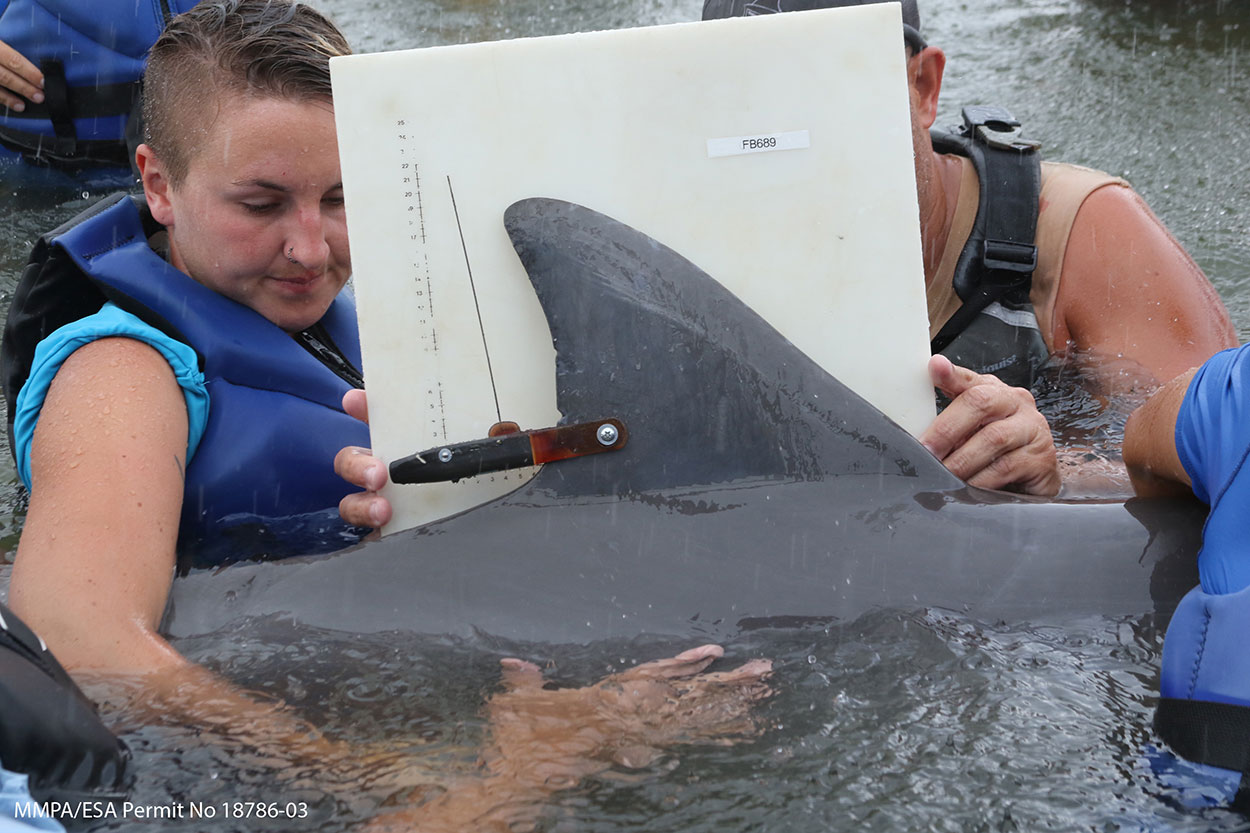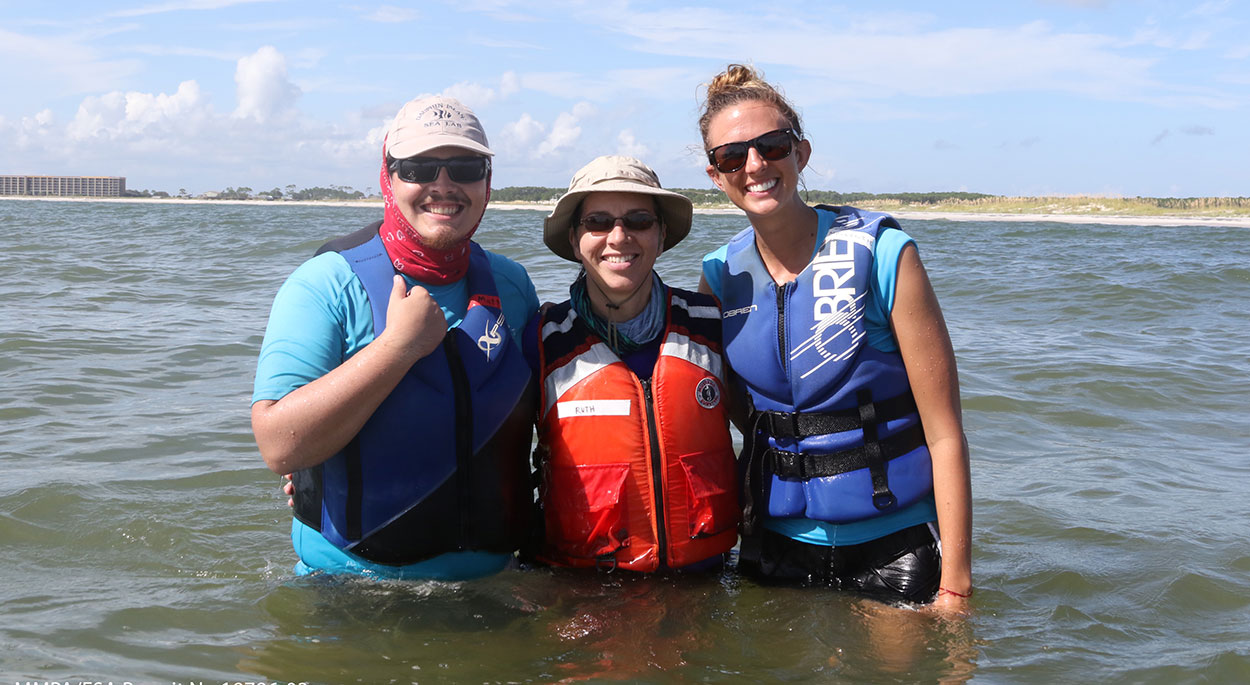
In late September 2018, health assessments were performed on common dottlenose dolphins (Tursiops truncatus) off the coast of Dauphin Island for the first time, and Dauphin Island Sea Lab researchers were part of that effort.
The health assessments are part of ongoing efforts by marine scientists to understand the impact of the 2010 Deepwater Horizon oil spill on the bottlenose dolphin population in the northern Gulf of Mexico.
A great deal of focus was placed on the dolphin population in Louisiana’s Barataria Bay immediately following the spill, because of the spill’s proximity to that area. Since then, the Consortium for Advanced Research on Marine Mammal Health Assessment (CARMMHA), led by the National Marine Mammal Foundation, has expanded the focus of dolphin health assessment research to the Alabama coast.

“We are all very much aware of the potential for another oil related disaster,” Ryan Takeshita with the National Marine Mammal Foundation explained. “We are trying to understand as much as we can about how animals are affected, so, that we can appropriately respond when the next spill happens, and be ready to quantify the impacts with the best available science.”
The health assessments are helping scientists determine dolphin health issues that may arise in an area impacted by oil from direct toxicity or the effects on the dolphin’s habitat and food supply.
Dr. Ruth H. Carmichael, a Senior Marine Scientist at the Dauphin Island Sea Lab, is a co-investigator on the CARMMHA project, which is funded by the Gulf of Mexico Research Initiative VI. Dr. Carmichael and her post-doc, Dr. Carl Cloyed, are working to understand the impact of the oil spill on the dolphin diets and how they may have changed since the oil spill.
During the Alabama health assessments conducted the last two weeks of September, DISL researchers helped to collect a variety of samples from the dolphins and each animal received a thorough examination from the veterinary team- very similar to a check-up a person would have at their doctor. The dolphins received a physical examination, as well as dental x-rays and full body ultrasound. Blood, skin and breath samples were taken from 18 individual dolphins. Scientists use breath samples to diagnosis potential lung infection, and the skin samples will be used as part of Carmichael’s dolphin diet analyses.

The dolphins assessed off Alabama’s coast were also satellite tagged to study their local movements through time. Scientists know they move within a region, but how and why isn’t completely understood, particularly in Alabama and nearby waters where dolphins are not well studied.
Carmichael added, “The tag data will be very useful to help us better understand boundaries of dolphin habitat in our area. We are already seeing some animals repeatedly use the same locations. We can compare dolphin movements with diet data to better define feeding areas in our local waters. Collectively, data from the CARMMHA project will be important to protect dolphin health, conserve habitat, and support dolphin recovery in years to come.”